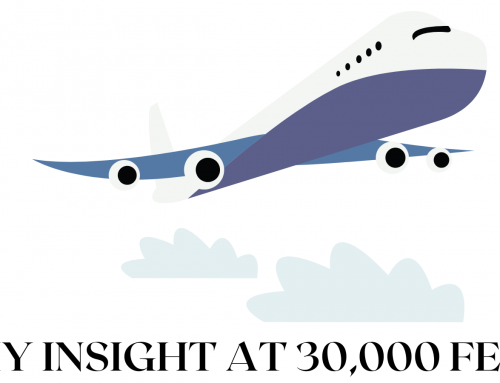I was pretty young the first time I heard the expression “comfort zone,” and the term immediately brought to my mind a small, cozy room, a hot water foot-bath and an overstuffed reading chair. In reality, comfort zones–as you probably already have a pretty good idea–are the individual limits of exposure and vulnerability each of us sets for ourselves as a way to dampen the anxiety and insecurity we tend to experience when we feel defenseless or not in control of our circumstances.
It is only human to want to feel that we have some measure of control over our environment. And the truth is, we all have some level of anxiety running in the background of our lives. Some folks have extremely low levels of anxiety, while others have more intense levels. Our day-to-day level of anxiety will dictate how expansive or small our individual comfort zones can be. For some people, getting behind the wheel of a car is stretching their comfort zone. Others are perfectly fine leaping out of airplanes. Some people feel anxious answering the phone, or will cross the street to avoid small talk with an acquaintance. Many of us are terrified at the prospect of addressing a large audience, while others are perfectly comfortable doing just that.
While some comfort zone issues are about struggling with awkward social situations, other comforts address degrees of physical safety. And while (at first glance) it may seem that issues of physical safety and issues of social risk are two completely different areas, both are rooted in the same basic human survival mechanisms.
Why is this? I mean, it’s easy to see why sky diving might have life-or-death consequences attached to it, but what about social anxiety? Where are the life-or-death consequences there?
Well, we evolved as social creatures; depending on one another for survival is hardwired in our DNA. Our most ancient ancestors found safety and survival through being part of a tribe, and that tribal impulse has carried on to the present day. The result of such social programming is the core sense that to be rejected by the tribe (aka our social group) could result in abandonment. So its no wonder that for many people, venturing out of comfort zone by speaking to a large group and risking embarrassment can feel literally life-threatening.
Every zone (even comfort zones) are defined by boundaries, and the Gate-Keeper of comfort zone boundaries is the phrase “What if?” The “What if’s” are warnings about the potential hazards that lie beyond circumstances we consider safe. “What if I go skydiving, and the ‘chute doesn’t open?” “What if, in starting a new school, the other kids are mean?” “What if I get a part in the play, and forget my lines onstage?” Very often we become trapped behind the “What-if’s,” and given enough time of this trapped-ness, the boundaries of our comfort zones become fixed and impassable, and we might feel stuck and stagnant.
The way to start to break loose from this comfort zone tyranny is to add follow-up questions to the “What-if’s.” There are three such questions, as a matter of fact:
“What’s the worst that can happen?”
“What’s the best that can happen?”
and
“What’s likely to happen?”
The worst that can happen while speaking to a large group, for instance, is that you might stammer and/or lose your place in you speech and/or feel embarrassed. The best that can happen is the audience is spellbound by what you have to say. And what is likely to happen is there might be some flaws in your presentation, but for the most part you pull it off just fine. And even if it turns out you are a terrible speaker, you’d shrug off the embarrassment and get on with your life (I know someone who processed her fears through these questions and was able to push through her concerns about parasailing and ended up having a wonderful, exhilarating experience!)
So while comfort zones exist to encourage us to keep safe, if left unchecked comfort zones can also encourage us to spend too much of our lives worrying about things that are not actually based in reality. If only for the sake of that last point, we would do well to work on breaking through the “What if” gatekeepers. But there is a deeper, more meaningful reason to break beyond our personal, individual comfort zones.
Our comfort zones isolate us from the outside world, and isolate us from each other. And yet, it is precisely by reaching beyond our self-imposed limits that we continue to grow. As we dare to connect with other people and new experiences, our sense of our world and who we are expands. As our world expands, who we are, how we define ourselves, encompasses more. We grow spiritually and psychologically. We let go of out-dated fears and create room for greater happiness and a more pure and open connection to the world around us.
An example: for many people, connecting with strangers means stepping outside of their comfort zone; yet reaching out to others may lead to increased feelings of happiness and decreased feelings of stress! With each daring accomplishment achieved by venturing beyond our comfort zones our self-esteem grows, and we naturally build on our successes, encouraging even more growth. And like a muscle that grows more powerful with exercise, regularly expanding our comfort zone becomes more graceful and easy over time. So next time you feel yourself clinging to your long-held self-limitations, you might ask yourself:
“What’s the worst that can happen?”
“What’s the best that can happen?”
and
“What’s likely to happen?”
The answer may lead you to a fresh way of stepping into the powerful, expansive person you truly are!





